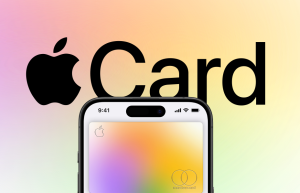
Gardening is a hobby people can enjoy almost anywhere. Some people are able to do it year-round because of the warm climates they live in. For others, this is not the case, and they may only have a few months to garden. Fortunately, there is a way for those to have a garden year-round, and that is to take your garden indoors. This can be easily done with a few aspects to consider, including grow lights. Below is a closer look at the bulbs needed as well as various aspects to consider before starting your indoor garden.
Choose the Type of Light
When choosing to grow an indoor garden, going to Agron would be beneficial to get the supplies needed. For instance, you must provide your plants with sufficient light for them to mature and continue to thrive. You can either use an already existing light fixture and just replace the bulbs with specialized grow bulbs, or you can buy a new lighting fixture with the bulbs included.
It is obvious that replacing bulbs is the less-expensive option, but buying a new fixture does provided more quality. Grow light fixtures are more of a holistic solution because they provide multiple plants with enough light. Not only that, but the light is dispersed evenly among them. Finally, specialized light fixtures will provide a fuller light spectrum than cheaper grow bulbs.
Three Growing Light Bulb Types
The type of light you purchase for your indoor garden is rather important. Below is a closer look at the three types available to choose from.
Incandescent Grow Lights
Incandescent grow lights are the oldest types available on the market today. They are not great at being energy efficient and produce a lot of heat. They are the cheapest option out of the three, but they are also the ones that are not preferred by a majority of indoor growers.
Fluorescent Lights
Fluorescent lights are better than incandescent lights because they produce a good amount of light for growing without producing too much heat. You can get them as tube lights or as compact reflectors. Using fluorescent lights is more energy efficient, but they are a more expensive option than incandescent lights.
LED Lights
LED lights are the most popular option and the latest technology on the market today. They are rated very well when it comes to being energy efficient, they do not put out a lot of heat, and they give off a great spectrum of color for growing plants successfully. Using LED lights is the most effective, efficient, and easiest-to-use option when growing plants indoors.
Tips on Setting Up an Indoor Growing Area
When you are wanting to grow your plants indoors, it is important to take a step back and plan the area before buying anything. Some people only have the room for one or two shelves, while others can dedicate a whole room to grow their plants. Take the space into great consideration so that you can place plants in pots or in beds accordingly.
Depending on how big plants get, it is best to group the pots or trays a minimum of four to eight inches away from each other. This will allow them to grow well and will give you room to properly care for them and prune them from time to time.
Finally, you must make sure the lights you purchase will provide the right amount of light for the entire area that was planted. Sometimes, you may need to purchase more than one light bulb, while other times, one will be enough for the area.
Where to Place the Grow Lights
The best arrangement for placing lights is directly over the plants, just like they would get sunlight from nature. Hanging them above the plants will allow all sides of the plants to get light.
If you plan on using incandescent lights, make sure to place them a minimum of 24 inches from the plants. Because LED and fluorescent lights do not have a high heat output, you can place them six to twelve inches above the plants. It is important to realize that you will have to adjust the grow lights from time to time because the plant will continue to grow and mature.
Number of Light Plants Require
Different plants require various lighting levels for optimal growth and success. Depending on what you want to grow, you may need to set up different light sets at different heights. As a general rule to follow, plants need 12 to 16 hours of light in one day. Make sure you provide your plants with at least eight hours of darkness per day to achieve optimal results.
Darkness is just as important to plants as light is. During the light hours, plants produce energy through a process called photosynthesis. During dark hours, plants break down this energy so that the plant can use it to grow and flower properly.
You can easily use a timer to program your lights to automatically come on and off at specified times. This way, it will not be a hassle for you to turn on the lights and remember to turn them off to provide enough dark hours for the plants to break down all the energy they have produced through photosynthesis.
If you have any questions or concerns regarding the amount of light to provide your indoor plants, make sure to refer to the package that the seeds came in or the tag found on the plant purchased. You can also visit the nursery to ask someone directly.
With the many advances in technology, gardeners can now enjoy their hobby all year round. Not only that, but they can continue to grow the fruit and vegetables their family enjoys eating. Indoor gardening is not difficult as long as you have the appropriate space, light, and the know-how regarding the proper care of the various plants you plan to grow indoors. Fortunately, there are a lot of helpful resources to turn to.
© 2026 HNGN, All rights reserved. Do not reproduce without permission.








